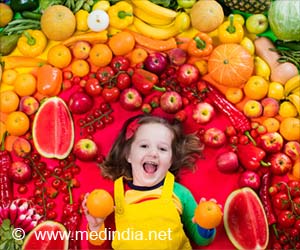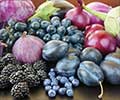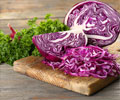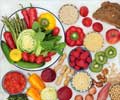Compounds present in purple vegetables and tubers can help prevent diabetes
- Type 2 diabetes is the most common type of diabetes in which the pancreas do not make enough insulin
- Red, purple, and blue pigments present in purple potatoes, purple carrots, and red cabbage, called acylated anthocyanins, can help lower the risk of diabetes
- Acylated anthocyanins help gut absorption and are better antioxidants compared to non acylated anthocyanins.
Anthocyanins as Promising Molecules Affecting Energy Homeostasis, Inflammation, and Gut Microbiota in Type 2 Diabetes with Special Reference to Impact of Acylation
Go to source).
Not all Anthocyanins are Created Equal
A significant amount of acylated anthocyanins can be found in purple potatoes, purple sweet potatoes, radishes, purple carrots, and red cabbages, while bilberries and mulberries contain mostly nonacylated anthocyanins. Although acylated anthocyanins are poorly absorbed in digestion, they have probiotic properties and reduce the risk of diabetes more efficiently than non acylated anthocyanins. “The studies have shown that, in addition to changing physical and chemical properties, the acylation affects how the anthocyanins are absorbed and metabolized,” says postdoctoral researcher Kang Chen at Food Sciences Unit, University of Turku, Finland.How Acylated Anthocyanins are Better
The acylated anthocyanins are more effective antioxidants than the non acylated anthocyanins. They can also improve the intestinal barrier that enables the absorption of necessary nutrients. Additionally, the acylated anthocyanins maintain gut microbiota homeostasis, suppress pro-inflammatory pathways, and modulate glucose and lipid metabolisms.“The plant's genotype defines what kind of anthocyanins they produce. In general, purple vegetables contain many acylated anthocyanins. Also, purple potatoes, especially the Finnish variety called ‘Synkeä Sakari’, is abundant in acylated anthocyanins,” says Chen.
Acylated anthocyanins travel through our bodies from the upper gastrointestinal tract to the colon, where they are metabolized by the gut microbiota. Glucose transporters are involved in anthocyanin absorption, but different glucose transporters are responsible for the absorption of acylated and non acylated anthocyanins. The acylated and non acylated anthocyanins also have different impacts on the enzymes involved in metabolism.
Correlation of Type 2 Diabetes with Inflammation
Type 2 diabetes (T2D) is a disorder characterized by chronic hyperglycemia that results from impairments in insulin resistance and/or secretion (2✔ ✔Trusted SourceHepatic glucose and lipid metabolism
Go to source). In T2D, impaired insulin function increases plasma glucose, nonesterified fatty acids, and branched-chain amino acids, which causes the defected energy metabolism and shifts energy metabolism from carbohydrate catabolism to fatty acid oxidation due to impaired insulin-stimulated glucose disposal. Insulin resistance is often accompanied by low-grade and chronic inflammation. In T2D, high-calorie intake, such as a high-fat diet, can trigger dysbiosis of gut microbiota and damage in the gut barrier, and subsequently induced endotoxemia, further aggravating insulin resistance and inflammation. Besides genetic predisposition, an unhealthy lifestyle can contribute to the development of T2D. Healthy food can be a choice for the prevention and management of T2D (3✔ ✔Trusted Source
Anthocyanins as promising molecules and dietary bioactive components against diabetes - A review of recent advances
Go to source).
References:
- Anthocyanins as Promising Molecules Affecting Energy Homeostasis, Inflammation, and Gut Microbiota in Type 2 Diabetes with Special Reference to Impact of Acylation - (https://pubs.acs.org/doi/10.1021/acs.jafc.2c05879)
- Hepatic glucose and lipid metabolism - (https://pubmed.ncbi.nlm.nih.gov/27048250/)
- Anthocyanins as promising molecules and dietary bioactive components against diabetes – A review of recent advances - (https://www.sciencedirect.com/science/article/abs/pii/S0924224417303436)
Source-Medindia















